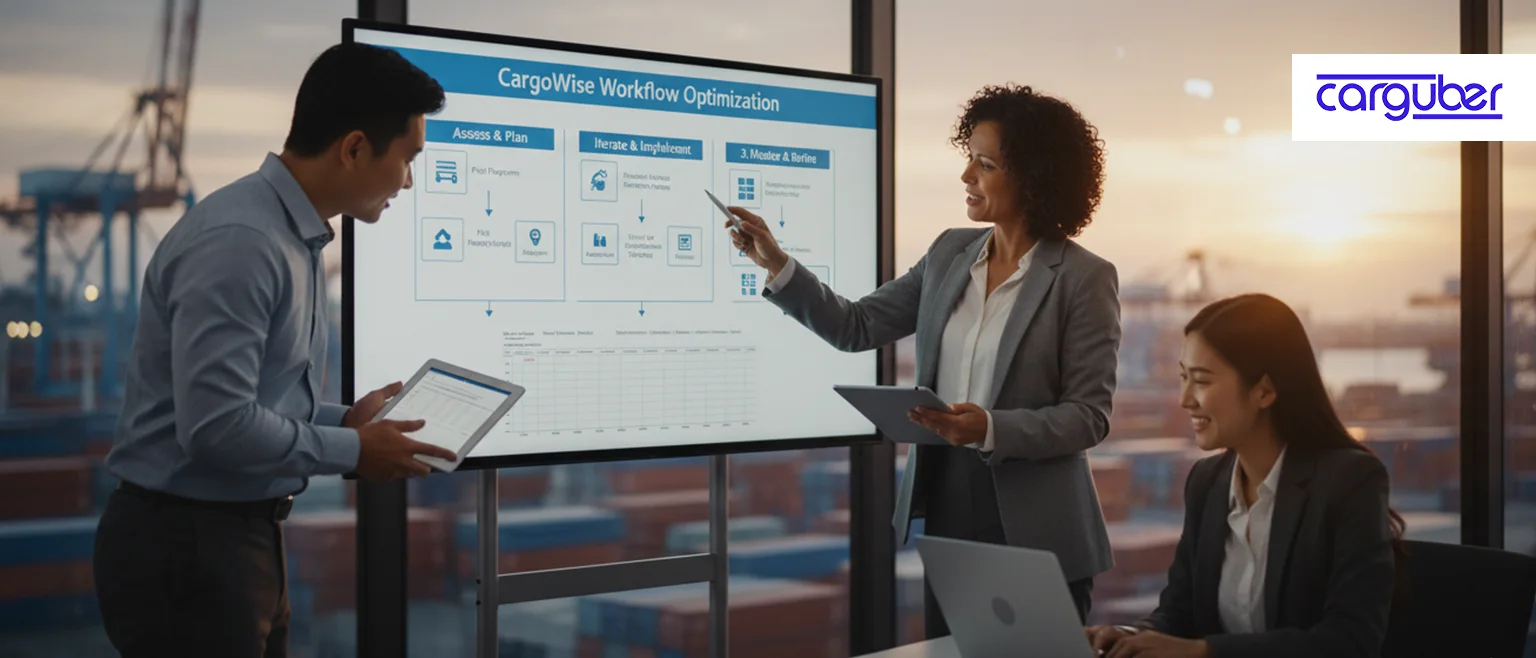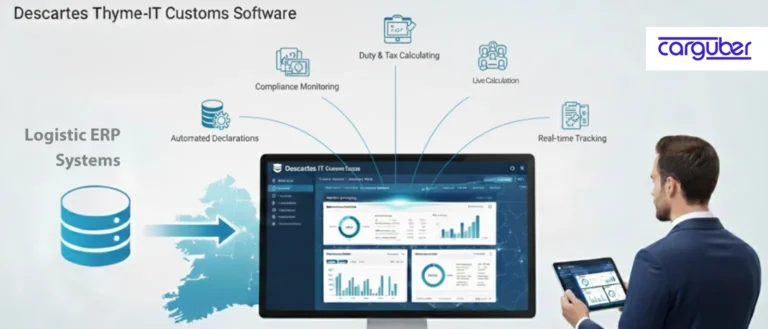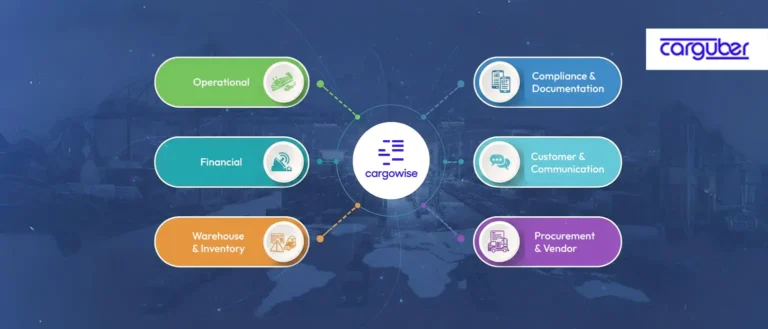How Do You Optimize Your CargoWise Workflow Without Disrupting Daily Operations?
Adopting CargoWise is a big step for freight forwarders and logistics companies. The system’s strength comes from its ability to consolidate operations, automate procedures, and provide global insight. However, for many users, the same question remains: how to optimize CargoWise workflow without disturbing daily operations.
Workflow optimization is not about pulling down what currently works; rather, it is about fine-tuning processes, eliminating inefficiencies, and discovering features that save time and minimize operational expenses. What about the good news? It can be accomplished without disrupting regular operations such as shipping, billing, or customer service. Partner with CargoWise support and helpdesk to improve your CargoWise workflow without disturbing regular operations.
Steps for Optimizing CargoWise Workflow
Optimizing CargoWise workflows isn’t just about using the system; it’s about tailoring it to match your business processes and goals.
Assess Current Workflows Before Making Changes
Understanding where you’re starting is the first step toward optimization. Jumping straight into reconfiguration can often lead to confusion and errors. Instead, start by analyzing how your team is currently using CargoWise. Examine existing workflows across departments, identify constraints caused by manual processes, solicit user feedback on challenges they face, compare system usage to available features, and look for duplicate data entry or unnecessary steps. This inspection stage identifies areas for improvement and helps to avoid changes that could disrupt smooth operations.
Start with Small, High-Impact Improvements
Big changes can be risky, so a safer approach is to start with small adjustments that deliver visible benefits. Simple but effective improvements include automating invoice and document templates, standardizing milestone tracking for shipments, creating pre-set notifications for customers and partners, cleaning duplicate data records to ensure accuracy, and establishing role-based dashboards for faster insights. Achieving these quick wins builds team trust and demonstrates that optimization improves operations rather than slows them down.
Provide Role-Based Training for Staff
CargoWise is only as effective as the people who use it. Without proper training, staff may develop workarounds that reduce efficiency. Role-based training ensures employees understand the system features relevant to their daily operations. This approach increases confidence in handling CargoWise, reduces errors in key processes, standardizes methods across branches, and lessens reliance on a few “power users.”
By providing training gradually and tailored to specific roles and responsibilities, you can enhance CargoWise performance without overwhelming your team.
Automate Repetitive Processes
Automation is one of CargoWise’s most powerful features, but it should be applied thoughtfully. Rather than automating everything at once, focus on repetitive and time-consuming tasks. Good candidates for automation include auto-generating invoices after shipment milestones, auto-populating data across multiple modules, sending trigger-based notifications for delays or exceptions, and pre-filling customs forms using master data. This approach saves time, improves accuracy, reduces manual effort, and allows staff to focus on value-added activities.
Standardize Processes Across Teams
For businesses with multiple branches or international offices, inconsistent workflows are a common challenge. Standardization ensures that everyone follows the same processes, making reporting and compliance much easier. To standardize effectively, create shared templates for documents and communications, build standard operating procedures linked to CargoWise functionality, use centralized dashboards for management oversight, and roll out changes gradually, starting with trial groups.
Maintaining consistency across teams not only increases efficiency but also improves the brand’s reputation with customers.
Improve Reporting and Visibility
Reports and visualization lay the groundwork for better decision-making, but many organizations underutilize their potential. A well-designed BI dashboard enables managers and teams to better track real-time performance. Clear key performance indicators (KPIs), such as margin per shipment and billing cycle times, should be defined, and dashboards tailored to each role, such as finance, operations, and management, can help with decision-making and real-time tracking. The dashboard eliminated outdated reports that were confusing. By simplifying reporting, executives can identify issues early on and confidently assess the impact of workflow improvements.
Involve Employees in the Process
Optimization works best when staff are actively involved in the process. Employees who use CargoWise daily often have the clearest insight into existing inefficiencies. Encourage staff input by hosting workshops before implementing changes, testing new workflows with small pilot groups, inviting employees to share manual workarounds that could be automated, and recognizing suggestions from those who propose improvements.
This collaborative approach ensures that changes are implemented smoothly and without significant resistance.
Integrate CargoWise with Other Systems
Disconnected systems often cause duplication, delays, and inefficiencies. CargoWise workflow optimization delivers the greatest benefits when integrated with financial systems, accounting software, transport management systems, and logistics portals for partners. This seamless integration ensures accurate data flow, eliminates redundancies, and creates a single source of truth. As a result, teams can work faster, improve accuracy, enhance customer service, and scale operations with confidence. Well-planned CargoWise integration removes repetitive tasks while maintaining consistency in daily operations.
Use a Phased Approach to Optimization
Companies often hesitate to implement improvements because they anticipate disrupting business operations. A phased approach reduces this risk by enabling a smooth CargoWise implementation. Realistic phasing strategies include starting with back-office procedures that have little impact on customers, implementing new workflows department by department, testing concurrently with current workflows before a full transition, and evaluating results at each stage before moving forward. This methodical approach not only improves efficiency, but also ensures business continuity.
Commit to Continuous Improvement
Optimization is not a one-time project. CargoWise regularly introduces new functionality to keep pace with evolving supply chain trends. To stay competitive, workflows need continuous review and refinement. A strong continuous improvement plan should include regular monitoring of key performance indicators to measure efficiency, ongoing collection of staff feedback, adjustments to automation rules as business needs change, frequent updates to training materials, and tracking of new CargoWise feature releases. Following this approach keeps the system optimized and continues to deliver value year after year.
How does Carguber Optimize Your CargoWise Workflow Smoothly?
Optimizing CargoWise workflows can be complex for freight forwarders, especially when striving to maximize efficiency without disrupting daily operations. Expert guidance becomes essential to resolve workflow conflicts quickly, configure processes accurately, and keep teams productive.
This is the point at which Carguber is essential. It serves as a marketplace for CargoWise users and freight forwarders, matching companies with seasoned logistics experts who provide customized workflow solutions. Companies can guarantee seamless configurations, effective process enhancements, and continuous support that enables them to confidently optimize CargoWise performance with our specialized CargoWise support and helpdesk services.
- Resolving CargoWise issues effectively through on-demand troubleshooting
- Personalized workflow setup according to the particular requirements of every company
- Teams receive role-specific training so employees can confidently use CargoWise.
- Constant system observation and guidance to ensure smooth functioning
- Scalable support that can grow with businesses, responding to both small teams and international forwarders.
We guarantee businesses will optimize workflows, minimize downtime, and take full advantage of CargoWise’s capabilities without interfering with daily operations.
Conclusion
CargoWise workflow optimization is no longer an option; freight forwarders and logistics providers must remain efficient, accurate, and competitive. The necessary improvements not only reduce errors and delays but also provide teams with the confidence to handle increased demands without stress.
That is why working with a dedicated CargoWise consultant is highly recommended. With expert guidance, businesses can quickly resolve issues, properly configure workflows, and keep operations running smoothly, ensuring teams maximize efficiency and get the most out of CargoWise every day. Contact us today!









